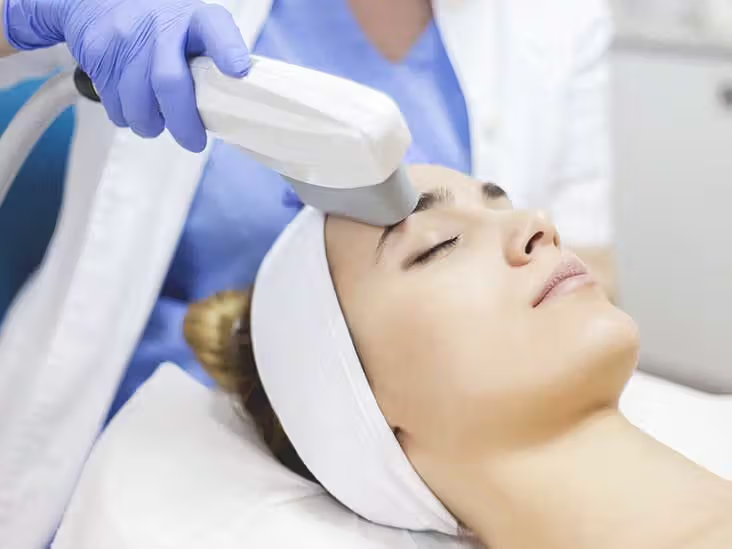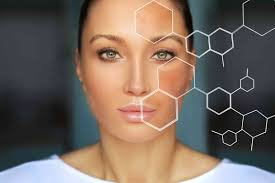Introduction
In the quest for flawless skin, many individuals have turned to advanced treatments like Intense Pulsed Light (IPL) therapy. Promoted as a non-invasive solution for various skin issues, IPL has gained significant popularity in recent years. However, does this treatment truly deliver on its promises? This article explores the effectiveness of IPL therapy, examining the science behind it, its applications, and its results. By the end, you’ll have a clear understanding of whether IPL is a viable option for your skincare needs.
What is Intense Pulsed Light Therapy?
Intense Pulsed Light therapy is a cosmetic treatment that uses broad-spectrum light to target various skin imperfections. Unlike lasers, which use a single wavelength, IPL emits multiple wavelengths. This allows the light to penetrate different layers of the skin, targeting issues like pigmentation, redness, and hair removal. The light energy is absorbed by the skin’s pigments, converting it to heat, which then destroys the targeted cells. Despite its complexity, IPL is often marketed as a versatile solution for a range of skin concerns.
How Does IPL Therapy Work?
The process of IPL therapy begins with the application of a cooling gel on the treatment area. A handheld device emits pulses of light onto the skin, with each pulse targeting specific skin structures. The pigments in the skin absorb the light, converting it to heat and destroying the targeted cells. The body’s natural processes then remove these damaged cells, leading to a gradual improvement in skin appearance. Because IPL can be adjusted to different wavelengths, it is often customized to address specific skin issues.
Common Uses of IPL Therapy
One of the most common uses of IPL therapy is for hair removal. The light targets the melanin in hair follicles, damaging them and reducing hair growth over time. IPL is also widely used for treating hyper pigmentation, including sunspots, age spots, and melasma. It can reduce redness caused by broken capillaries and rosacea. Additionally, IPL is effective in minimizing fine lines and wrinkles by stimulating collagen production. These varied applications make IPL a popular choice for those seeking non-invasive cosmetic treatments.
The Science Behind IPL Effectiveness
To understand whether IPL works, it’s important to examine the science behind it. The effectiveness of IPL largely depends on the principle of selective photosynthesis. This means that the light targets specific pigments in the skin while leaving surrounding tissues unharmed. The heat generated by the light destroys the targeted cells, which are then removed by the body’s natural processes. However, the success of IPL depends on several factors, including skin type, hair color, and the specific condition being treated.
What to Expect During an IPL Session
Before undergoing IPL therapy, a consultation with a qualified professional is essential. During this consultation, the practitioner will assess your skin type, discuss your concerns, and determine if IPL is suitable for you. On the day of the treatment, you’ll need to avoid sun exposure and certain skincare products to reduce the risk of complications. The session typically lasts between 20 to 30 minutes, depending on the size of the area being treated. Some patients may experience mild discomfort during the treatment, but this is usually minimal.
Potential Side Effects and Risks of IPL
While IPL is considered safe for most individuals, it is not without risks. Common side effects include redness, swelling, and temporary discomfort, which usually subside within a few hours. In rare cases, IPL can cause blistering, scarring, or changes in skin pigmentation. These risks are higher for individuals with darker skin tones, as the light may target the surrounding skin instead of just the pigments. It’s crucial to choose a qualified practitioner who can assess your skin type and customize the treatment accordingly.
IPL vs. Other Skin Treatments
When considering IPL therapy, it’s important to compare it with other available skin treatments. For instance, laser treatments are often more precise and can target deeper layers of the skin. Chemical peels offer a more intense exfoliation, making them ideal for severe pigmentation issues. Microaggression, on the other hand, is a milder option that focuses on surface-level imperfections. Each treatment has its own advantages and disadvantages, so understanding your specific skin concerns is key to choosing the right option.
Long-Term Results of IPL Therapy
The long-term effectiveness of IPL therapy varies from person to person. Many patients report significant improvements in their skin’s appearance after just a few sessions. However, these results are not always permanent, and maintenance sessions may be required. For hair removal, IPL typically reduces hair growth rather than completely eliminating it. Hyper pigmentation and redness may also recur, especially with continued sun exposure. Therefore, while IPL can provide noticeable results, it is not a one-time solution.
Who Should Consider IPL Therapy?
IPL therapy is best suited for individuals with lighter skin tones and darker hair. This is because the light targets dark pigments, making it less effective on light hair or darker skin. Those with mild to moderate skin concerns, such as sun damage, redness, or fine lines, may benefit the most from IPL. However, individuals with severe acne, deep wrinkles, or certain skin conditions should explore alternative treatments. A consultation with a dermatologist or licensed practitioner can help determine if IPL is the right choice for you.
Preparing for an IPL Session
Proper preparation can enhance the effectiveness of IPL therapy and minimize potential side effects. In the weeks leading up to your session, avoid excessive sun exposure, as tanned skin can increase the risk of burns. Discontinue the use of retinoids and certain skincare products that can make your skin more sensitive to light. On the day of the treatment, cleanse your skin thoroughly and avoid applying any makeup or lotions. Following these guidelines can help ensure a successful and safe IPL session.
Post-Treatment Care and Maintenance
After an IPL session, proper aftercare is essential to achieving the best results. Immediately following the treatment, your skin may appear red or slightly swollen, but this usually subsides within a few hours. Avoid sun exposure and wear broad-spectrum sunscreen to protect your skin from UV rays. Refrain from using harsh skincare products for a few days to allow your skin to heal. To maintain the results, you may need to schedule follow-up sessions or incorporate specific skincare routines.
Conclusion
Intense Pulsed Light therapy has proven to be an effective treatment for a variety of skin concerns. From hair removal to reducing hyper pigmentation and redness, IPL offers a non-invasive solution with noticeable results. However, it is not a one-size-fits-all treatment, and its effectiveness depends on various factors such as skin type, hair color, and the specific issue being addressed. While IPL can deliver impressive results, it is essential to have realistic expectations and understand that maintenance sessions may be required. Ultimately, consulting with a qualified professional is the best way to determine if IPL is the right choice for your skincare needs.








